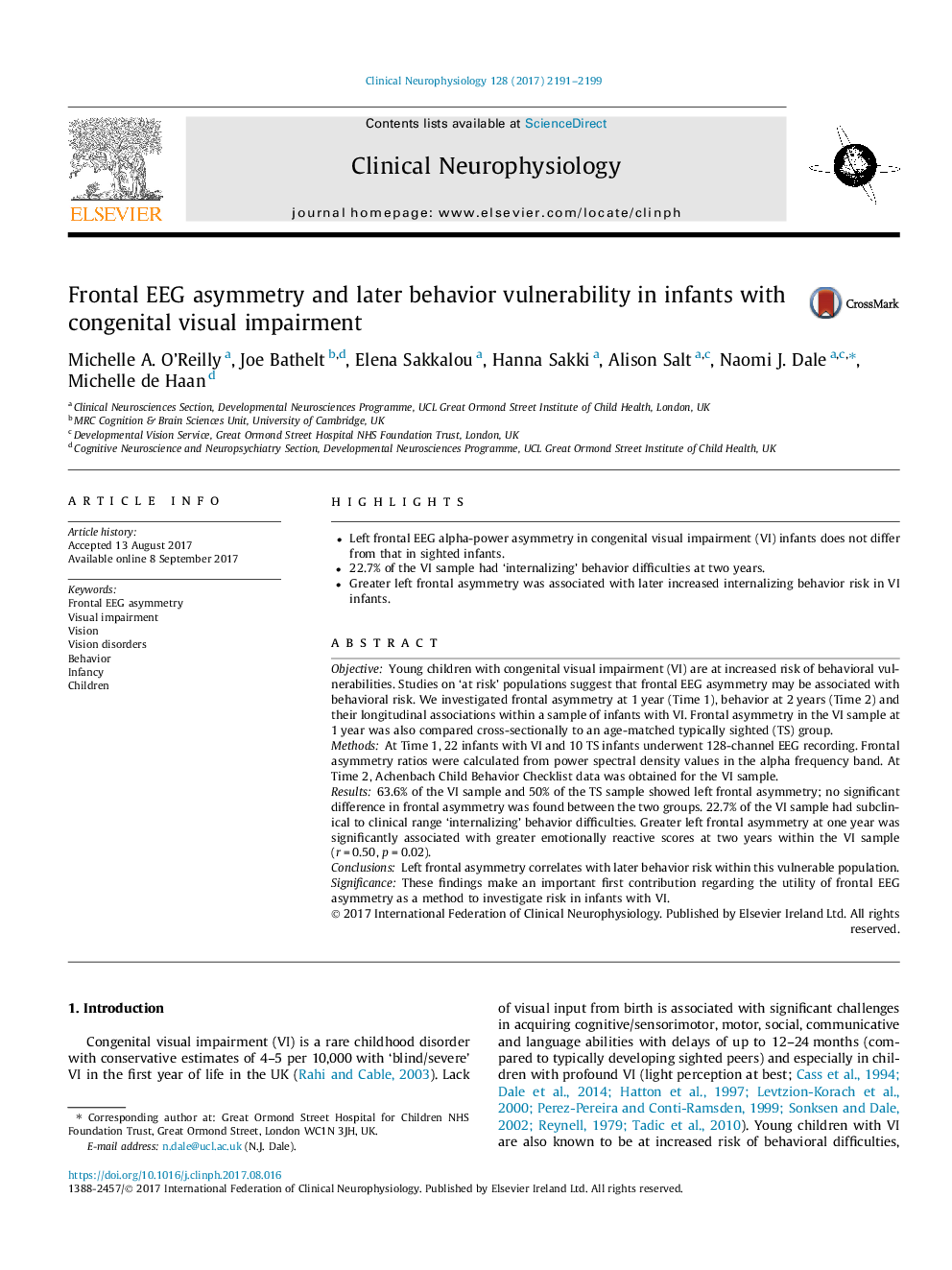| Article ID | Journal | Published Year | Pages | File Type |
|---|---|---|---|---|
| 5627585 | Clinical Neurophysiology | 2017 | 9 Pages |
â¢Left frontal EEG alpha-power asymmetry in congenital visual impairment (VI) infants does not differ from that in sighted infants.â¢22.7% of the VI sample had 'internalizing' behavior difficulties at two years.â¢Greater left frontal asymmetry was associated with later increased internalizing behavior risk in VI infants.
ObjectiveYoung children with congenital visual impairment (VI) are at increased risk of behavioral vulnerabilities. Studies on 'at risk' populations suggest that frontal EEG asymmetry may be associated with behavioral risk. We investigated frontal asymmetry at 1 year (Time 1), behavior at 2 years (Time 2) and their longitudinal associations within a sample of infants with VI. Frontal asymmetry in the VI sample at 1 year was also compared cross-sectionally to an age-matched typically sighted (TS) group.MethodsAt Time 1, 22 infants with VI and 10 TS infants underwent 128-channel EEG recording. Frontal asymmetry ratios were calculated from power spectral density values in the alpha frequency band. At Time 2, Achenbach Child Behavior Checklist data was obtained for the VI sample.Results63.6% of the VI sample and 50% of the TS sample showed left frontal asymmetry; no significant difference in frontal asymmetry was found between the two groups. 22.7% of the VI sample had subclinical to clinical range 'internalizing' behavior difficulties. Greater left frontal asymmetry at one year was significantly associated with greater emotionally reactive scores at two years within the VI sample (r = 0.50, p = 0.02).ConclusionsLeft frontal asymmetry correlates with later behavior risk within this vulnerable population.SignificanceThese findings make an important first contribution regarding the utility of frontal EEG asymmetry as a method to investigate risk in infants with VI.
